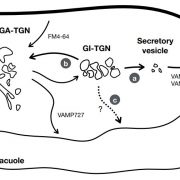
Insights into the Trans-Golgi Network and Protein Secretion
Plant Physiology, Plant Physiology: On The InsideIn eukaryotic cells, the movement of cargo between single membrane-bound organelles such as the endoplasmic reticulum (ER), Golgi apparatus, trans-Golgi network (TGN), endosomes, lysosomes, and vacuoles is mediated by membrane trafficking. At the donor organelle, cargo molecules are loaded into transport…
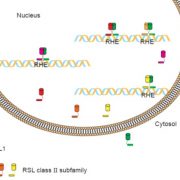
Advances in Understanding Root Hair Formation
Plant Physiology, Plant Physiology: On The InsideRoot hairs greatly increase the surface area of roots, thereby facilitating the uptake of nutrients and water from the rhizosphere. They also serve as sites for plant interactions with soil microorganisms. Thus, elucidation of the molecular pathway for their development is important for potential modification…

The Terpene Synthases of Red Algae Have a Bacterial Origin
Plant Physiology, Plant Physiology: On The InsideThe red algae (Rhodophyta), encompassing over 8,000 species, are the richest source of marine secondary metabolites. Among red algae, many genera produce terpenes, which constitute the largest class of secondary metabolites. Despite the rich diversity of terpenes in red algae, little is known about how…
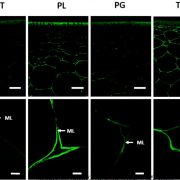
CRISPR Mutants Shed Light on Pectin’s Role in Tomato Fruit Softening
Plant Physiology, Plant Physiology: On The InsideTomato (Solanum lycopersicum) fruits undergo pronounced softening during ripening. Softening is important for flavor development and overall palatability, but also impacts fruit storage, transportability, and shelf life. Shelf life is a particularly important quality trait of tomato fruits affected by…
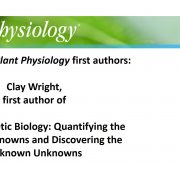
Recognizing Plant Physiology first authors: Clay Wright
Plant Physiology, Plant Physiology: Author ProfilesClay Wright, first author of Plant Synthetic Biology: Quantifying the Known Unknowns and Discovering the Unknown Unknowns
Current Position: Assistant Professor, Biological Systems Engineering, Translational Plant Science Program, Virginia Tech, Blacksburg VA USA.
Education: Postdoctoral Fellow,…
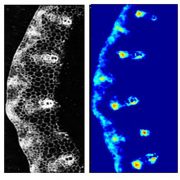
New imaging technique developed for the quantitative visualization of sucrose in plants
Blog, Plant Physiology(Translated from the original)
Regina Devrient Press and Public Relations
Leibniz Institute of Plant Genetics and Crop Plant Research
Sucrose is the primary transport form of sugar in plants. It therefore plays an essential role as an energy source, but also as a signal generator under…
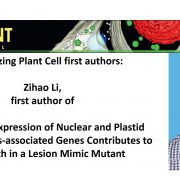
Recognizing Plant Cell first authors: Zihao Li
Plant Physiology, Plant Physiology: Author ProfilesZihao Li, first author of Uncoupled Expression of Nuclear and Plastid Photosynthesis-associated Genes Contributes to Cell Death in a Lesion Mimic Mutant
Current Position: Ph.D. candidate, CAS center for Excellence in Molecular Plant Sciences, Shanghai center for Plant Stress Biology, University of…
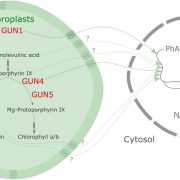
Another gun Dismantled: ABSCISIC ACID INSENSITIVE4 Is Not a Target of Retrograde Signaling
Blog, Plant Physiology, Plant Physiology: News and ViewsBy Amna Mhamdi and Charlotte M.M. Gommers
The nuclear genome encodes the majority of chloroplast-localized proteins and, in return, chloroplasts exert some control over nuclear gene expression via so-called retrograde signals. These signals derive from developing chloroplasts (referred to as biogenic…
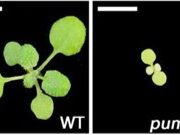
Moonlighting Enzymes: How Often Are We Missing Secondary Functions?
Blog, Plant Physiology, Plant Physiology: News and ViewsWe think of enzymes as highly specific catalysts that carry out one reaction and show nearly absolute substrate specificity. However, absolute specificity is the exception, not the rule, as most enzymes accept several structurally similar substrates. Moreover, many enzymes catalyze alternative reactions…

